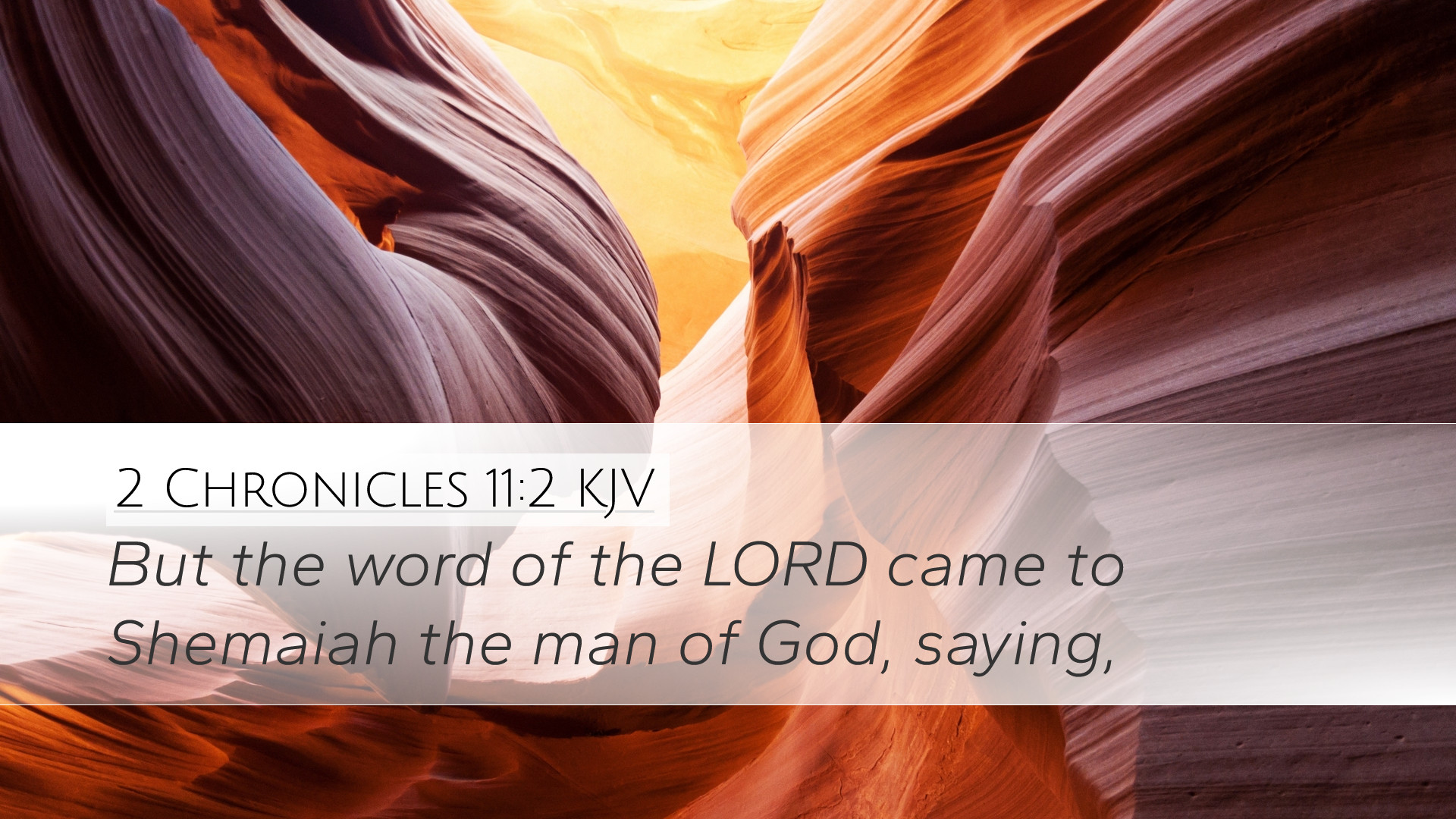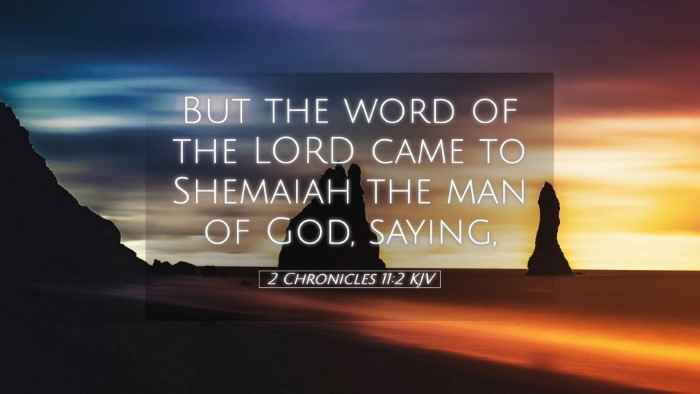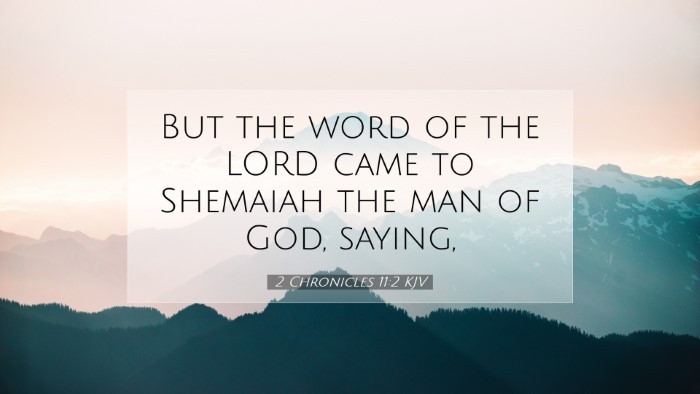Commentary on 2 Chronicles 11:2
In the context of 2 Chronicles 11:2, we find King Rehoboam facing a critical moment in his reign. This passage highlights the divine intervention as God directs the prophet Shemaiah to deliver a message to Rehoboam regarding the impending conflict with the northern tribes of Israel. The rich commentary provided by various theologians brings forth insights that are vital for understanding this pivotal point in Israel's history.
Historical Context
Matthew Henry emphasizes the historical backdrop of the divided kingdom, illustrating how Rehoboam's immediate actions were influenced by his father Solomon's legacy, as well as the unrest among the ten tribes. This discord stemmed from a combination of heavy taxation and forced labor implemented during Solomon's reign, leading to a demand for a more lenient rule.
Jeroboam's Leadership
Albert Barnes points out that Jeroboam, a former servant of Solomon, had been anointed by God to lead the northern tribes. His rise was a fulfillment of prophecy, and Rehoboam’s opposition could lead to a civil conflict that might tear the nation apart. This setting urges the present-day readers to consider the weight of leadership and the need for godly wisdom in moments of strife.
Divine Instruction through Shemaiah
In this verse, God sends the prophet Shemaiah to provide counsel to Rehoboam. Adam Clarke notes the significance of the prophetic word in the life of Israel's kings, emphasizing that divine guidance was crucial for the national welfare. The intervention serves as a reminder that God was still actively involved with His people, even in times of turmoil.
The Message of Restraint
The message delivered to Rehoboam is one of peace and restraint, instructing him not to go to war against his brethren. Matthew Henry interprets this as not just a command, but a divine strategy aimed to preserve the remnant of Israel and prevent unnecessary bloodshed. It highlights God's mercy and the desire for unity amongst His people, even in their divided state.
Theological Implications
This verse carries significant theological weight for pastors and theologians alike. The nature of God’s communication to His leaders illustrates His ongoing providence. Albert Barnes asserts that God’s desire for peace is a recurring theme throughout Scripture, encouraging leaders today to seek divine counsel in their decisions.
Application for Today's Leaders
The reluctance to engage in conflict, as seen in Rehoboam's situation, can serve as a practical lesson for modern-day church leaders. Adam Clarke reminds us that the temptation to react impulsively to challenges can lead to disastrous outcomes. Leaders are called to remain vigilant, seeking God's wisdom before acting, particularly concerning conflicts within their congregations.
Lessons on Unity and Division
Finally, this passage urges reflection on the concepts of unity and division within the body of Christ. Matthew Henry illustrates that just as God sought to maintain unity among His people, so should the church today prioritize reconciliation and understanding over division.
- Pray for guidance: Leaders should commit decisions to prayer, seeking God's will above all.
- Foster open communication: Just as Shemaiah communicated God's message, church leaders should maintain transparency with their congregations.
- Promote reconciliation: Following God's example, churches should be proactive in addressing conflicts with love and humility.
Conclusion
2 Chronicles 11:2 serves as a crucial reminder of God's providential care and desire for unity within His people. The insights gathered from public domain commentaries deepen our understanding of the text, providing valuable lessons for contemporary believers in leadership roles. As the church navigates conflicts, let us look towards the divine wisdom offered in Scripture, ensuring our actions reflect God's heart for reconciliation and peace.


